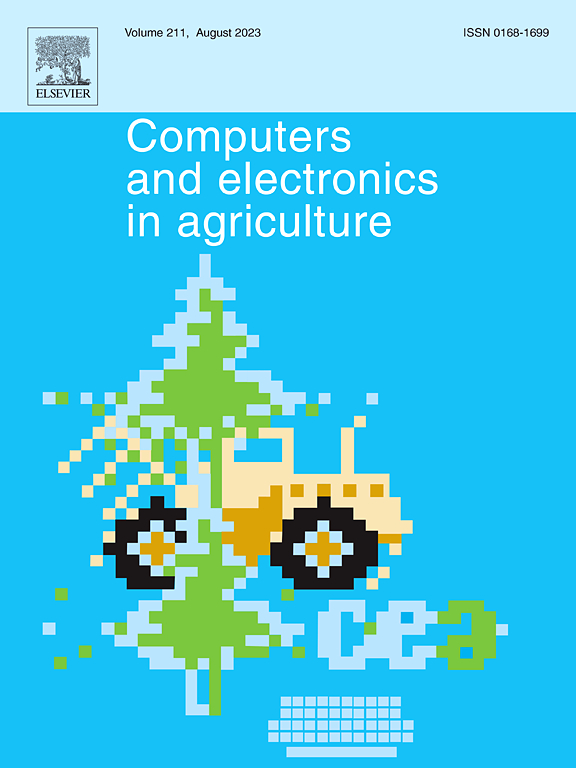GrapeCPNet: A self-supervised point cloud completion network for 3D phenotyping of grape bunches
IF 8.9
1区 农林科学
Q1 AGRICULTURE, MULTIDISCIPLINARY
引用次数: 0
Abstract
The measurement of phenotypic parameters of fresh grapes, especially at the individual berry level, is critical for yield estimation and quality control. Currently, these measurements are done by humans, making it costly, labor-intensive, and often inaccurate. Advances in 3D reconstruction and point cloud analysis allow extraction of detailed traits for grapes, yet current methods struggle incomplete point clouds due to occlusion. This study presents a novel deep-learning-based phenotyping pipeline designed specifically for 3D point cloud data. First, individual berries are segmented from the grape bunch using the SoftGroup deep learning network. Next, a self-supervised point cloud completion network, termed GrapeCPNet, addresses occlusions by completing missing areas. Finally, morphological analyses are applied to extract berry radius and volumes. Validation on a dataset of four fresh grape varieties yielded values of 85.5% for berry radius and 96.9% for berry volume, respectively. These results demonstrate the potential of the proposed method for rapid and practical extraction of 3D phenotypic traits in grape cultivation.
GrapeCPNet:用于葡萄串三维表型的自监督点云完成网络
新鲜葡萄的表型参数测量,特别是在单个浆果水平上,对产量估计和质量控制至关重要。目前,这些测量是由人类完成的,这使得它成本高昂,劳动密集,而且往往不准确。三维重建和点云分析的进步允许提取葡萄的详细特征,但目前的方法由于遮挡而导致点云不完整。本研究提出了一种专门为3D点云数据设计的新颖的基于深度学习的表型管道。首先,使用SoftGroup深度学习网络从葡萄串中分割出单个浆果。接下来,一个自我监督的点云补全网络,称为GrapeCPNet,通过补全缺失区域来解决遮挡问题。最后,形态学分析应用于提取浆果半径和体积。在四种新鲜葡萄品种的数据集上进行验证,结果表明,浆果半径和浆果体积的R2值分别为85.5%和96.9%。这些结果证明了所提出的方法在葡萄栽培中快速和实用的3D表型性状提取的潜力。
本文章由计算机程序翻译,如有差异,请以英文原文为准。
求助全文
约1分钟内获得全文
求助全文
来源期刊

Computers and Electronics in Agriculture
工程技术-计算机:跨学科应用
CiteScore
15.30
自引率
14.50%
发文量
800
审稿时长
62 days
期刊介绍:
Computers and Electronics in Agriculture provides international coverage of advancements in computer hardware, software, electronic instrumentation, and control systems applied to agricultural challenges. Encompassing agronomy, horticulture, forestry, aquaculture, and animal farming, the journal publishes original papers, reviews, and applications notes. It explores the use of computers and electronics in plant or animal agricultural production, covering topics like agricultural soils, water, pests, controlled environments, and waste. The scope extends to on-farm post-harvest operations and relevant technologies, including artificial intelligence, sensors, machine vision, robotics, networking, and simulation modeling. Its companion journal, Smart Agricultural Technology, continues the focus on smart applications in production agriculture.
 求助内容:
求助内容: 应助结果提醒方式:
应助结果提醒方式:


